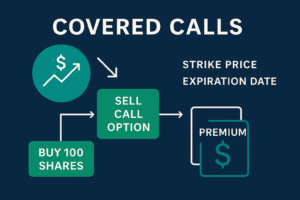From Chaos to Counsel in Drug Access
“Every ambitious project begins in chaos. Too many signals, scattered data, and unclear priorities blur the path forward. Counsel, by contrast, is distilled guidance: a way to act with clarity, accountability, and confidence. The journey from chaos to counsel requires a framework that not only organizes complexity but also empowers others to thrive within it.”
In drug access, the chaos is obvious: list-vs-net pricing spreads, rebate waterfalls, “100% pass-through”, opaque utilization management, and patients who pay more than plan sponsors. We need a new market design—one that moves the system from hidden incentives to visible value, and from “winner‑take‑all” brand wars to collective therapeutic progress.
This essay outlines that design. I’ll argue that the rebate era is giving way to fixed‑gain access contracts and transparent, transaction‑level provenance. The mechanism is a simple, composable identity standard—NodeID—that mints a unique, verifiable record for each coverage/fulfillment scenario by fusing three components: CNID (clinical), POID (plan overlay), and COID (commercial). With NodeID, we can price dynamically, reward outcomes, and return savings where they belong: to patients and sponsors, not the shadows between them.
Along the way, I’ll rely on a practical operating philosophy I call Chaos → Counsel—enabled by three levers:
- Disintermediation: remove middle layers that don’t add patient value.
- Hyper‑scalability: once a pattern works, replicate it across thousands.
- Hyper‑intimacy: keep outputs personally relevant and human, even at scale.
Why Rebates Are Fading
Rebates once solved a real problem: they let payers buy down net costs while preserving list price as a contracting lever. Over time, the tool swallowed the toolbox. Rebate logic became the center of the market—steering formularies, distorting competition, and splitting prices into what the plan sees and what the patient experiences. When a plan’s net might be ~$500 but a patient’s cash or deductible-phase price is ~$1,100, the misalignment is not academic—it’s a daily adherence risk. And it’s exploitative.
Three realities make the current regime unsustainable:
- Friction taxes adherence. Prior auth cycles, step edits, and undisclosed nets displace therapy.
- Value hides in accounting. Dollars captured downstream never show up at the counter.
- Trust degrades. When no one can explain the price on the receipt, legitimacy erodes. How can the pharmacist moniker be “the verifiers” when we have no idea how much something will cost for our patients?
The fix isn’t moral outrage; it’s market redesign. We need prices that are known before the visit, verifiable at the counter, and comparable across clinically appropriate options.
A Bond‑Like Alternative: Fixed‑Gain Access Contracts
Think of the current rebate as a volatile coupon—unpredictable, retroactive, and dependent on mix. Now imagine replacing it with a fixed‑gain access contract: a published net rate plus a small service fee for adjudication and support, optionally layered with outcomes escrow that returns funds if specified clinical targets aren’t met.
It’s not securitization. It’s predictable, contractible net pricing—closer to a bond’s fixed yield than a stock’s swings. For late‑stage assets with stable safety profiles, that predictability is a feature: plans can budget; patients can plan; manufacturers can compete on clarity and service, not just rebate muscle. For early-stage assets, we can leverage predictive analytics and market dynamics to assess impact.
Fixed‑gain design does four things:
- Flattens list‑to‑net spread so the patient and the plan see the same price.
- Moves dollars forward (discount-first) instead of back (rebate-later).
- Creates room for “patient dividend”—an automatic, visible price reduction at the point of sale.
- Makes outcomes contracts legible by separating price from performance.
But to make any of this work, each transaction needs a transparent identity.
The CNID/POID/COID Triad → NodeID
CNID (Clinical Node ID): the clinical rules relevant to a case—diagnosis qualifiers, prior auth criteria, step therapy paths, dosing frequency, and evidence tags. CNID is the structured distillation of “what makes this patient clinically eligible right now for this drug?”
POID (Plan Overlay ID): the plan’s operational layer—network design, channel choices (retail/specialty/home infusion), site-of-care rules, and benefit design variables (deductible stage, copay accumulator settings). POID explains “how this plan translates coverage into a member experience.”
COID (Commercial ID): the manufacturer–sponsor arrangements—discount schedule, service bundle (care coaching, cold-chain logistics), outcomes triggers, and any pass-through terms. COID represents “what commercial value applies to this product for this population.”
NodeID is the cryptographic receipt minted at fulfillment when CNID + POID + COID converge. It timestamps the scenario, logs the references used, and encodes the verifiable net that applies. You can think of it as a signed JSON card for the transaction:
NodeID = hash(
CNID:{clinical_rules…},
POID:{plan_overlay…},
COID:{commercial_terms…},
time, location, dispenser, eligibility_state
)
NodeID doesn’t need a blockchain. Sign-and-verify with standard keys, store minimal payload, and keep PHI out of the front-end equation. The point is provenance: anyone with permission can confirm that a given member at a given time qualified for a published net and that the receipt they see is authentic.
From Chaos to Counsel: The Three Levers Applied
1) Disintermediation
- Mirror Transparency: At the point of sale, show the published net linked to the NodeID. If the net is $520, the member should not be quoted $1,100, ever.
- Direct Exchange: Let manufacturers post public nets for eligible segments (cash, high-deductible, carve‑out programs) and allow plans to match or better those nets. NodeID validates the rules and price in real time.
- Patient Dividend: Dedicate a fixed share of the commercial value to the member at the counter. Again, visible on the NodeID receipt, if the specific context or environment permits
2) Hyper‑Scalability
- Schema‑first ingestion: Parse every payer policy into CNID elements—diagnosis codes, lab thresholds, prior therapies, documentation requirements—with consistent keys. Or, develop an aggregated global standard.
- Composable adjudication: Treat POID as plug‑ins: network, channel, accumulator. Swap components without rewriting the pipeline.
- COID libraries: Maintain human‑readable term sheets as code (discount tables, service tiers, outcomes rules). Use versioning to prevent drift that is outside of clinical guidelines or standards of medical practice.
Once this scaffolding exists, scaling across payers and drugs is pattern replication, not custom extract, transform and load.
3) Hyper‑Intimacy
- Personal price and path: The member sees a short summary: “Here’s your net price, why you qualify, and what happens next.”
- Clinician-first messaging: Pharmacists get a concise “what to tell the patient” card derived from a CNID (not a 50-page PDF). POS messaging is grossly undervalued as a terminal for authentic, time-saving messaging.
- Respectful defaults: If confidence is low (e.g., ambiguous criteria), escalate to human review. Counsel beats speed when the stakes require it.
Operating the NodeID Market
Inputs
- Policy PDFs, coverage bulletins, and denial letters → CNID.
- Plan design tables and channel contracts → POID.
- Manufacturer term sheets and outcomes addenda → COID.
Processes
- Deterministic parsing first; LLM fill for edge cases; human escalation on low confidence.
- Pre‑adjudication quote: generate a NodeID preview before the prescription is dispensed.
- Finalization at dispense: sign the NodeID and store an auditable, minimal record.
Outputs
- Member receipt (plain language).
- Pharmacist brief (clinical path, alternatives, contact steps).
- Plan ledger (cost, dividend paid (if any), outcomes escrow balance).
- Manufacturer ledger (net realized, service obligations, escrow state).
Market Mechanics: From Winner‑Take‑All to Collective Therapeutic Areas
Today, competitive classes can look zero-sum: one brand secures the rebate tower and starves rivals of access when they come to market. A NodeID market enables collective therapeutic areas:
- Comparable nets: When nets are visible, brands compete on price, convenience, service, and outcomes—not on hidden kickbacks.
- Access scoreboards: Publish a simple Price‑Adherence Frontier for each drug: net price vs. real‑world persistence. Let plans buy on the efficient frontier, not on folklore. If drugs are really generating better health outcomes, let’s see the RWE.
- Dynamic steering: If a patient is non‑responsive or intolerant, the NodeID history allows frictionless migration to an alternative with a pre‑computed net—no reset to the chaos uncertain next steps.
The result isn’t one winner; it’s a healthier class where each product finds its comparative advantage and patients get to superior safety and efficacy profiles.
Example Flows
Insured Segment
The plan adopts a Fixed‑Gain Access Contract: $520 net across the class, plus service funds for coaching. These programs currently exist in the specialty pharmacy arena with specialized pharmacist care, so this money could go to anyone provide value-added service. Also, if the manufacturer’s public net is lower, the plan auto‑matches. The NodeID ensures the member never sees a price inconsistent with the plan’s net, even during deductible. If the first‑line therapy fails (documented in CNID), the second‑line price is already known—no fax tag.
Governance and Guardrails
- Policy Vault: a neutral ingestion layer where UM rules are parsed into CNIDs with lineage.
- Open spec: CNID/POID/COID field dictionaries are public; vendors can implement without permission.
- Signed receipts: NodeIDs are signed by dispensing entities and verifiable by plans and manufacturers.
- Minimal data, maximal proof: Store hashes, not PHI; show proofs in layman’s terms, not clinical dossiers.
- Escalation lanes: Any low‑confidence adjudication triggers human review; ambiguity is surfaced, not buried.
Trust follows from verification, attribution, transparency, and escalation—four guardrails built into the spec.
Metrics That Matter
- Net‑to‑Patient Alignment (NPA): share of transactions where member price equals plan net.
- Friction Minutes: time from prescription to first fill.
- Persistence Uplift: adherence improvement after dividend + coaching.
- Rebate Exposure Ratio: revenue tied to hidden rebates vs. fixed‑gain contracts.
- Outcomes Yield: escrow returned vs. retained based on real‑world targets.
When these move in the right direction, everyone sees it on the same scoreboard.
Roadmap: Pragmatic Steps to a NodeID Future
- Mirror Transparency Now
Start by printing a NodeID receipt that mirrors the plan’s net at the counter. Even without new contracts, this alone reduces chaos: the member sees the number that matters. - Publish Class Nets
In competitive categories, post a class net—a ceiling you’ll not exceed per member per month, tied to minimal clinical criteria. Invite manufacturers to match or beat it openly. Information needs to move with more velocity. - Introduce Fixed‑Gain Access
Replace rebate waterfalls with discount‑first + outcomes escrow. Dollars move to the front of the transaction; performance risk moves to a clear, measurable backstop. - Open the Policy Vault
Convert payer policies into CNIDs with lineage. Make them searchable, comparable, and computable. - Scale Across Classes
Once the pattern works for one class, replicate: new CNIDs, POIDs, and COIDs slot into the same adjudication spine.
A Note on Philosophy
Rebates are an unseen world shaping the seen experience of patients. NodeID turns the unseen into something we can verify, compare, and improve. It’s not about smashing institutions; it’s about redeploying intermediation toward service and patient care, not secrecy.
Direct exchange is the heart of fair commerce. In access, that means the plan and the patient see the same number; the dispensing pharmacist can explain it in a sentence or two; and the manufacturer wins by making outcomes easier—not paperwork harder.
Conclusion: Counsel, Not Confusion
Rebates are not vanishing tomorrow, but their centrality is. The next market is fixed‑gain, outcomes‑aware, and receipt‑verified. CNID, POID, and COID give us the building blocks; NodeID fuses them into a single, auditable truth for each transaction. With that truth in hand, we can disintermediate what doesn’t serve patients, scale what works across thousands of cases, and keep the experience intimate—human, understandable, and just.
This is the shift from chaos to counsel: fewer mysteries, more action. A system where contributors are credited, patients are empowered, and plans can finally buy what they intended to purchase all along—health value at a price everyone can see.
This final installment completes the Coverage Node Enumeration Series. Together, these essays trace the evolution from centralized PBM dominance to transparent, node-based exchange — a system where every coverage decision is auditable, every price verifiable, and every stakeholder accountable.








